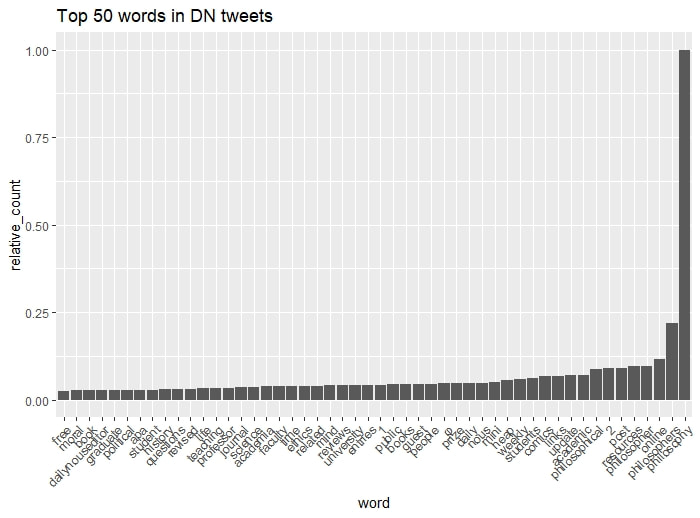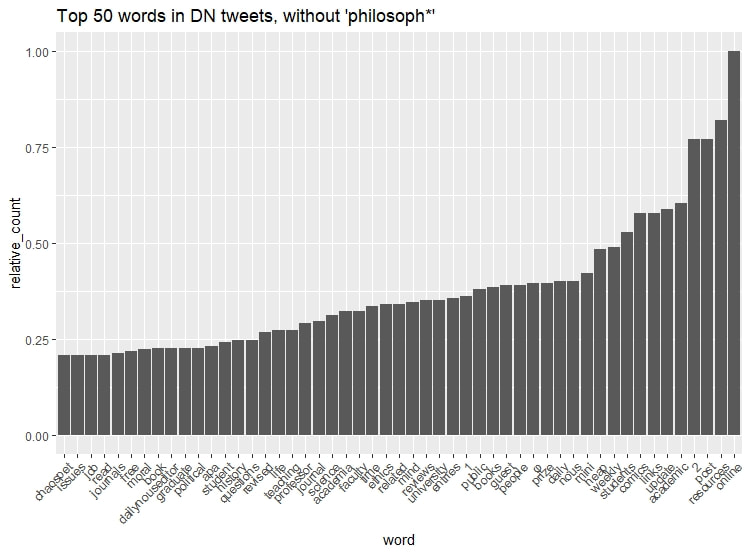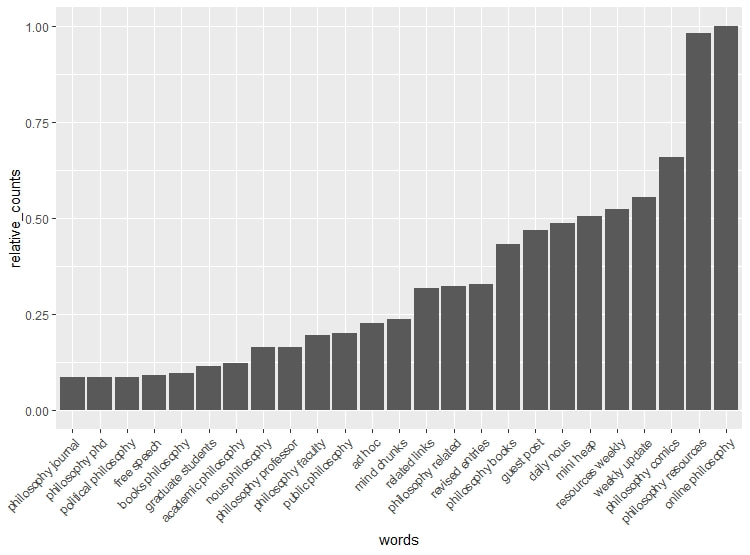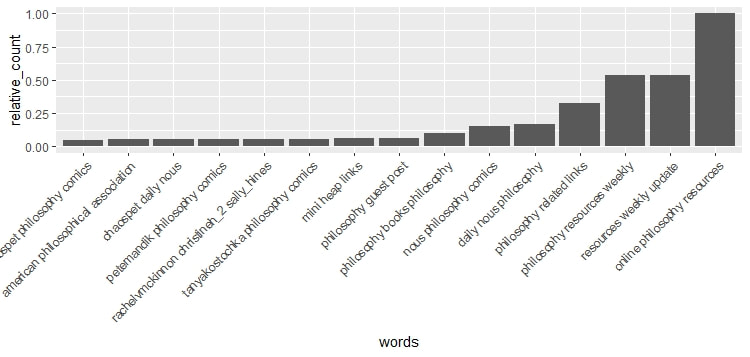|
It's been a minute. I've had a lot on my plate the last month or so and haven't been able to do as much with scraping Twitter as I'd like. But I've got some time this morning, so I thought I would look at DN's Twitter feed content. I loaded the content from the most recent 3200 posts (again, Twitter API limits), did some cleaning, took out the stop words (e.g. "the", "a", etc.) did a count of the 50 most popular terms, and scaled them to the most popular term. So "philosophy" on the right side of the graph is the most-used term (with 1500 occurrences over the past 6k tweets) and the counts are scaled relative to that. "Philosophy", "philosopher", and "online" are the most common, which aren't too surprising for the Twitter account of an online philosophy news sight. I added "philosoph*" as a stopword. Now let's look at the top 50. One thing to note is that we don't have the sharp drop-off like we saw in the previous graph. This suggests that DN tweets "philosophy" A LOT (again, unsurprising), but without the outlier we can see some more structure. "Online" takes the cake with the greatest number of occurrences. We see mentions of "online" and "resources" quite a bit now. "Students" comes in around 0.50, "academia" and "faculty" around 0.30, and "apa" and "graduate" at a little under 0.25. What to conclude from the data? If you felt that the DN Twitter account was largely about sex & gender or diversity or any other New Infantilism issues in particular, you'd be mistaken. It's largely about the profession in broad strokes (as well as some comics, like "chaospet" or "phi or not to phi". (btw "or", "not", and "to" are all stop-words and so not included in the counts. So every instance of "phi" in the comic's name "phi or not to phi" counts as two separate instances of "phi". So where you see it around 0.30, cut that in half and it'll give you a better picture of what the true value is. Now let's go from single words to bigrams. Bigrams are word pairs, so in the phrase "Waltz, bad nymph, for quick jigs vex" the bigrams are "waltz bad", "bad nymph", "nymph quick" ("for" is a stop word and hence omitted), etc. Here we'll just do the top 25 bigrams. This confirms what we saw above: DN's Twitter is largely about online philosophy resources aimed at the profession writ large. Folks who are looking for resources in the profession would do well, it would seem, to follow DN on Twitter. Finally, let's take a look at trigrams. I only did the top 25 because the text is unreadable otherwise. Yep, this confirms what we saw with the unigrams and bigrams. I have to confess that I thought the DN Twitter account was largely about sex and gender issues (i.e. the TERF wars) and chronically linking to folks fighting that battle. When looking at all the data, my suspicion was wrong. DN's Twitter, more often than not, talks about resources for and within the profession. I've been working on DN's Twitter feed for a few months and across several posts, but this is the end of it. Thanks if you've read along, and thanks especially to Justin Weinberg who agreed to let me look at and share these analyses. Any thoughts you'd like to share are warmly welcomed.
0 Comments
Leave a Reply. |
About me
I do mind and epistemology and have an irrational interest in data analysis and agent-based modeling. Old
|





 RSS Feed
RSS Feed
